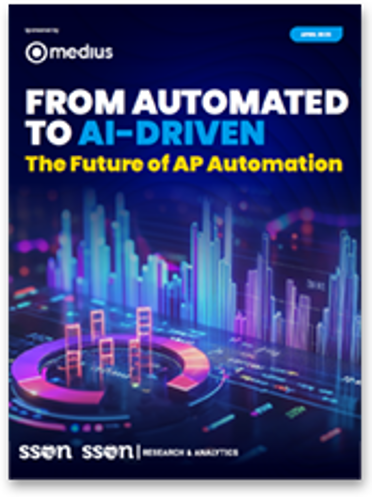What are the benefits of RPA & AI in Accounts Payable?
AI has been a hot topic for quite some time with many talking about ChatGPT and how it can change people’s lives. However it’s not just consumer and retail customers who are benefiting from this new technology. B2B businesses and finance institutions are now seeing the capabilities of AI and Machine Learning within their work processes.
There are a few terms you’ll hear when people are discussing it so we’ve broken down what the differences are and how you can benefit from AI in your accounts payable automation software.
What’s the difference between RPA and AI?
There are a few differences between RPA and AI, and it can get a little confusing when they are being used to refer to the same thing in some cases.
RPA is used to automate highly repetitive tasks by using rules it has been programmed to follow and it will not deviate outside of this unless you reprogram it. However if given enough data it can seem like it’s machine learning without the complex set of rules, the issue with the technology arises when there are fluctuations.
This is where AI would be a much better option. AI and machine learning can learn continuously with feedback, which means it can learn, self correct and even reason with a much lower need for maintenance - it’s like RPA v2.
What can AI do for procurement and Accounts Payable?
So, what are the advantages of AI in accounting?
The main benefit is helping organizations optimize their procurement processes and accounts payable systems and in turn helps them to make better buying decisions.
AI can also be used by B2B procurement departments to execute their strategies more effectively which can help to increase spend under management and improve adoption rates.
What can RPA do for procurement and Accounts Payable?
If you have highly repetitive processes, then RPA may be exactly what you need. Organizations that are still partly or fully operating on legacy systems find that RPA is a great compromise, especially if tasks like manual data entry are costing the company money.
There is one caveat though, in that it is only useful for highly standardized tasks, if you need you system to deal with changing actions - this may not be the best solution.
Could you use both RPA and AI together in procurement?
Different organizations have different needs, so it’s hard to prescribe a one size fits all solution. For those companies that still have legacy systems in place, utilizing both RPA and AI can be a great way to connect the two.
An example of how this can work is using AI and ML to automate selected parts of the process, and RPA for the more repetitive tasks through the wider procurement processes and workflows.
How will AI affect the account and accounts payable industry?
Although AI has been around for some time in consumer facing industries, it has taken a while for B2B industries to adopt. With cloud-based procurement solutions being adopted at a rapid rate since the pandemic, financial and banking industries have seen the benefits of AI in a short space of time, including:
- spend allocation
- spend analytics
This evolution gives B2B customers a user experience which has been readily available to consumers via banking apps for several years.
Get ready for AP automation with six simple steps.
The cost and effort to automate accounts payable are minimal compared to most digital transformation projects, and the benefits are nearly immediate for the entire organization. The decision to automate AP should be a no-brainer, but where do you start?
Follow the six steps in our Buyer’s Guide to AP Automation Solutions to build a solid business case that illustrates how you can help your business save time and money, reduce fraud and risk, increase visibility to data and cash flow, and more.
Autonomy allows for the right actions to happen no matter what.
AI/ML addresses the short comings of rule-based automation by creating autonomous engines for invoice management. Where automation dictates that a certain set of actions happen when the trigger event occurs, autonomous, through AI/ML, dictates that the right set of actions happen when triggered, even when the underlying details shift. It is a subtle but powerful difference. Consider how an autonomous system allows approvals to flow to the appropriate person even when certain aspects of the approval flow shift and change due to absence, job changes, project team movement, and so forth — all without human intervention. Powerful.








